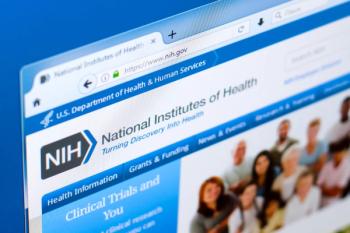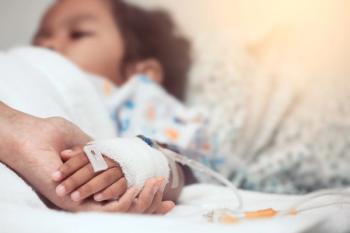
Looking at Long-term Results, New Opportunities With CAR T-Cell Therapies
Penn Medicine's Stephen Schuster, MD, offers an overview of an eventful year in CAR T-cell therapy at the NCCN Virtual Annual Meeting.
More than 3 years have passed since FDA approved the first chimeric antigen receptor (CAR) T-cell therapy to treat patients whose B-cell lymphoma had not responded to other treatments. Since 2017, researchers have learned more about controlling side effects and which patients make good candidates for therapy, but one question remains: why does this process work for some patients but not others?
“That is the question we struggle with,” said Stephen J. Schuster, MD, who on Friday offered an overview of developments in CAR T-cell therapy during the National Comprehensive Cancer Network’s Virtual Annual Meeting.
Schuster, director of the Lymphoma Program at the Abramson Cancer Center, University of Pennsylvania, was the principal investigator for the trial that led to the approval of tisagenlecleucel, or tisa-cel (Kymriah). He has also led trials involving bispecific antibodies, and said he’s given them to patients when CAR T-cell therapy failed.
Since July, 2 more CAR T-cell treatments have been approved: they are brexucabtagene autoleucel (Tecartus), a new treatment for mantle cell lymphoma, and lisocabtagene maraleucel, or liso-cel (Breyanzi), which is also approved for refractory B-cell lymphoma but uses a manufacturing process that promises less toxicity that previously approved CAR T-cell therapies.
Schuster discussed differences among the 3 approved anti-CD19 therapies, tisa-cel, liso-cel, and axicabtagene ciloleucel, or axi-cel (Yescarta), and also discussed the path ahead, which will involve deciding which patients will benefit from CAR T-cell therapy, how early to give it, and how to combine it with other drugs for the best result.
“We’re going to be combining CAR T cells with other therapies, and moving it up earlier in therapy for patients,” Schuster said. “I think it's going to change the landscape.”
Added choices and recent advances reflected in the
- In follicular lymphoma, there are now distinctions between second-line and subsequent treatments and third-line and subsequent treatments for the elderly or infirm.
- Liso-cel was added in 5 different places as a category 2A recommendation: in follicular lymphoma, marginal zone lymphoma, DLBCL, and for forms of high-grade B-cell lymphoma.
Schuster highlighted the approval in mantle cell lymphoma, saying in this condition, “recurrence was the norm.” Schuster cited 2020 data published by Michael Wang, MD, of The University of Texas MD Anderson Cancer Center, showing the 61% complete response rate at 12 months when a BTK inhibitor is used a bridge therapy, which Schuster said was “clearly better than any of the other agents approved for relapsed/refractory mantle cell lymphoma.”
Moderator Andrew D. Zelenetz, MD, PhD, of Memorial Sloan Kettering Cancer Center, asked whether there was more news to come in chronic lymphocytic leukemia (CLL). Referring to
While enthusiastic about CAR T-cell treatments, Schuster took note of newly approved third-line options that were quickly added to the NCCN guidelines:
CAR T-cell therapy has saved the lives of patients who had been extremely ill, but it still fails in about two-third of patients who receive it, for reasons that are not fully understood. This is of great concern to payers, given the initial prices of $373,000 to $475,000.
Along with fellow Penn researchers Elise A. Chong, MD, and Marco Ruella, MD, Schuster
The customized approach of CAR T-cell therapy—in which a patient’s T-cells are harvested and engineered to attack cancer before being reinfused into the body—brings with it pluses and minuses; a key downside is the time it takes to manufacture individual treatments for each patient. But a big plus is that CAR T-cell therapy now has more than 5 years of long-term data behind it, Schuster said. Despite the cost, both Schuster said payers have largely come on board with the early CAR T-cell therapies, at least at academic medical centers where the reimbursement process has been fine-tuned.
Success in CAR T-cell therapy will come from gaining more understanding of key steps in the treatment process: patient selection, apheresis and cell manufacturing, selection of bridge therapy, and management of toxicities.
There’s room for advancement in the role of bridging therapy, which Schuster called “the art of oncology,” with the arrival of new third-line agents and advances it other drug classes used as bridge therapy. Deciding the order of when to use immune checkpoint inhibitors, bispecific antibodies—whether it’s before, during, or after CAR T-cell administration—will open new possibilities.
“We’re talking about the two-thirds of patients that aren't responding to the CAR Ts, and maybe getting a third of them to respond to a bispecific [antibody] so I'm optimistic that bispecifics are going to have a role here,” he said. “We're looking at that in a more systematic fashion.”
Newsletter
Stay ahead of policy, cost, and value—subscribe to AJMC for expert insights at the intersection of clinical care and health economics.














































